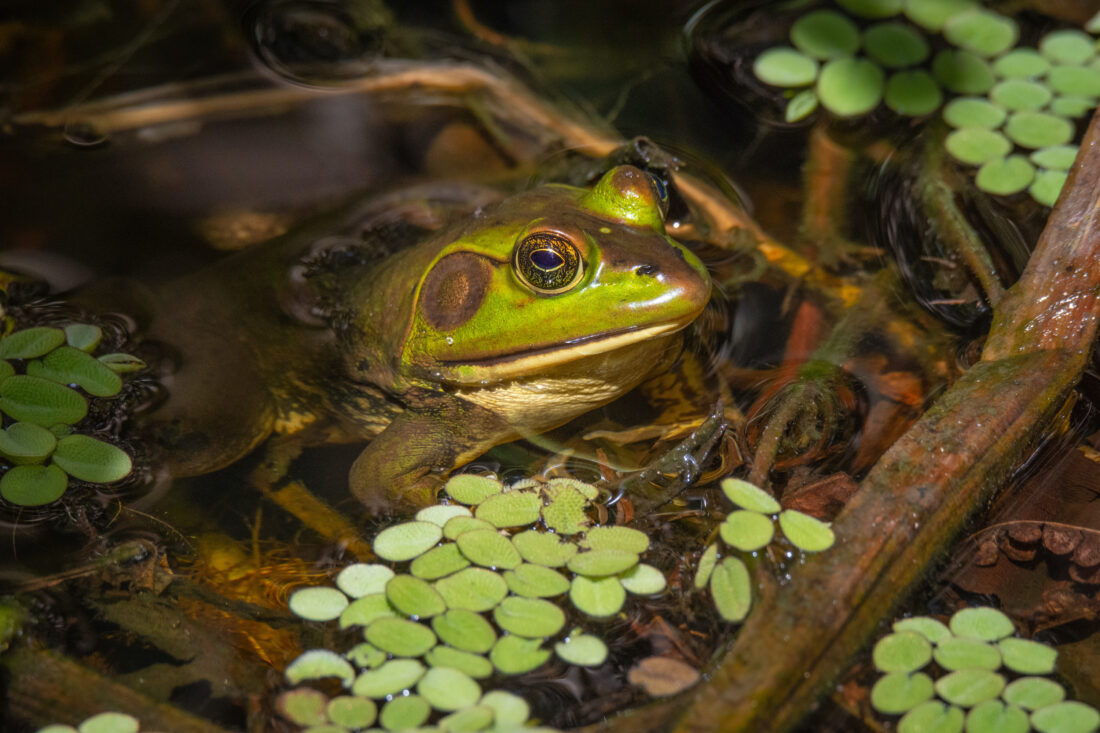In the scientific world, naming is a matter of practicality and precision, with each new designation following a universal system and giving clues about a species’ evolutionary history and identifying traits. That doesn’t mean scientists don’t get creative—in 2015, a black tarantula discovered near Folsom Prison earned the name Aphonopelma johnnycashi.
But the common names favored by the public, unbound by Latin tradition and evolutionary trees, are often a little more evocative than the pairing of genus and species. Compare, for example, Cryptobranchus alleganiensis to “snot otter” in reference to a mucous-secreting aquatic salamander, or Nylanderia fulva to “rasberry crazy ant” [sic] for an erratic ant noticed by a man named Mr. Rasberry.

Below, discover five Southern species with fabulously weird common names, inspired by everything from their supreme hideousness to odd vocalizations.
Pig frog
Sometimes the simplest names can be the most descriptive. These insect-, fish-, and worm-eating amphibians live all over the Southeast, from Texas to Florida, where their pig-like grunt of a call can be heard chorusing through ponds and permanent wetlands during mating season from April to August. Like their close relative, the voracious bullfrog, pig frogs are large and greenish-black; to tell the two species apart, look for the pig frog’s more pointed snout and bold spots or stripes on the thighs.
Pleasing fungus beetle
This colorful group of beetles inhabits nearly the whole world, but the majority of their almost two thousand species live in the tropics, including eighteen native to Florida. Most in the southeastern United States are black with a red head and prothorax (the first segment of the thorax). The name likely comes from their “pretty” appearance coupled with their consumption of the likes of mushrooms and bracket fungi. Despite the splotches of bright orange on many species, it usually takes an entomologist or a mushroom forager to spot one—two types of people likely to be pleased at the prospect.
Hellbender
The wrinkled skinfolds, wide mouth, and impressive size of the third largest salamander in the world has inspired many graphic names: snot otter, lasagna lizard, Allegheny alligator, and walking catfish. But the most common is hellbender, possibly because early settlers who glimpsed them thought they had crawled out of the underworld and were bent on returning. They occupy Appalachian rivers and streams that drain into the Mississippi River and are divided into two subspecies, the eastern and the Ozark hellbender, both of which are highly threatened by habitat loss and degradation.
Chicken turtle
The first known account of this reptile from the 1800s stated that “the turtle is more palatable than the cooter, and in fact tastes like chicken.” Though they feature a distinctive net-like pattern on their shells, chicken turtles’ most defining characteristic is an impossibly long neck, which snakes out as they swim to snag menu items like crayfish, dragonflies, tadpoles, and small fish. Split into three subspecies, this turtle lives in shallow, still, or slow-moving bodies of water across the Southeast.
Tufted titmouse
Together, chickadees and titmice make up the roughly fifty-five species of family Paridae, found worldwide. The tufted titmouse, a woodland species that eats everything from insects and spiders to seeds and fruit and will even hang upside-down on branches to forage, is found all over the South and makes for a common backyard feeder guest. The species takes the first part of its memorable name from the pointy gray crest on its head. “Titmouse” comes from Old English—“tit” and “mase” together mean “small bird.” Over time, “mase” transformed into mouse, possibly aided by the similarity of the small, fast-moving gray birds to rodents.








